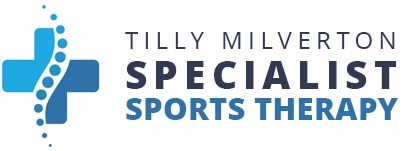ACL rehab timelines are everywhere online. ‘Run at 12 weeks,’ ‘Jump at 16,’ ‘Back to sport at 6 months.’ But here’s why that approach fails.
ACL rehab timelines are everywhere online.
“Run at 12 weeks.”
“Start jumping at 16 weeks.”
“Back to sport at 6 months.”
You’ve probably seen advice like this floating around — or worse, been told it directly by a therapist or surgeon.
But here’s the truth: an ACL rehab timeline based on weeks is a guessing game.
Your knee doesn’t know what day it is.
It doesn’t magically become ready at week 12 just because a PDF said so.
It only becomes ready when it has passed the right tests.
Why Week-by-Week ACL Rehab Timelines Fail
I get messages every week from people who say things like:
“I was told to run at 12 weeks… now I’m swollen, sore, and scared I’ve done damage.”
They followed the plan.
They ticked off the weeks.
But their knee wasn’t ready — and their body told them the hard way.
This is what happens when ACL rehab is treated like a calendar instead of a process.
What Should Your ACL Rehab Timeline Be Based On?
Two words: Objective testing.
Your ACL recovery should move forward when you’ve hit the right benchmarks, not just because a date has passed. That means:
-
Regaining full knee extension and flexion
-
Hitting strength benchmarks on both legs
-
Passing landing, balance, and control drills
-
Proving your graft can tolerate more load
This is the foundation of every successful ACL rehab timeline.
The Problem With Cookie-Cutter ACL Rehab Plans
A timeline that says “do X at week 12” is built on hope, not science. And hope isn’t a rehab strategy.
Without objective testing, athletes risk pushing too soon, flaring up, or worse setting back their recovery entirely.
Your ACL rehab timeline should give you clarity, structure, and the confidence that you’re actually progressing not just moving through dates on a calendar.
The Plan That Actually Works
That’s why I built my Complete ACL Recovery Guide because I was tired of seeing people let down by cookie-cutter programs.
It isn’t based on weeks. It’s built on levels, tests, and progression markers.
✅ Know exactly what to do and when
✅ Exercise demos for every stage
✅ Tests to pass before moving forward
✅ Built by someone who has lived it and rehabbed hundreds of knees
So ask yourself: are you making real progress, or are you just hoping the calendar carries you through?
Conclusion
If you’re following an ACL rehab timeline that’s week-by-week, you’re taking chances with your knee.
The truth is simple: structure beats hope every time.
Your recovery should be based on what your body can do not what week you’re in.
💥 Tap here to get the guide and take control of your ACL rehab timeline the right way.
